The Bantu Israelites continued from PART I
In order to further our understanding of the Bantu Israelites presences in Africa we must go back to the time of the Exodus, and even a bit before that. During the times preceding the Exodus of the Israelites under Moses, history records other smaller exodus’. As a result of the new Hamitic leadership of Egypt regaining political power through the a military take over and the subsequent enslavement of the Hyksos Israelites that followed, some Israelites decided to leave Egypt. These pre-Exodus migrations of Israelites resulted in populations of Israelites in the Mediterranean, Africa and even India.
“And Joseph died, and all his brethren, and all that generation. And the children of Israel were fruitful, and increased abundantly, and multiplied, and waxed exceeding mighty, and the land was filled with them. Now there arose up a new king over Egypt, which knew not Joseph. And he said unto his people, Behold, the people of the children of Israel are more and mightier than we.” – Exodus 1:6-9
We must be mindful that the Israelites comprised the majority of the population of ancient Egypt during the Hyksos period and it was because of this huge population that they were considered a threat to the indigenous Hamitic inhabitants of Egypt. We will see that the Israelites will become a threat in all the lands of their captivity, primarily because of the large populations they developed in all the lands of their captivities (ie Assyria, Persia). After the Hyksos Israelites were overthrown, many of them relocated to escape the hard bondage that followed.
“Overthrowing the Hyksos relieved them of the abomination of the foreign ‘shepherd kings’ ruling over them, but they now had another problem. The children of Israel had multiplied greatly and outnumbered the Egyptians. It also states that they were ‘mightier’ than the Egyptians, which would indicate a military power established while the Hyksos ruled… What happened to them after they were overthrown? Once overthrown by military defeat, these rulers would have either been killed in battle, killed as hostages, or they escaped. We know from Egyptian and Greek historians that there were several ‘exodus’ events of Israelites from Egypt, the last being Moses’ Exodus. Prior to that, others were driven out or escaped from Egypt. The ones that escaped were probably able to do so because of their financial or ruling position in their society. The children of Israel who remained in Egypt were placed in bondage and eventually freed through Moses… It is sufficient to identify the names of the important rulers who [were] exiled from Egypt. Two of these names are [Judah] Zarah’s son’s names, Calcol and Darda, and he others are Cadmus and Danaus.” – Israelology – The Birthright, House of Israel, Kingdom, and Sons of God, By Paul H. Andree, III, PG 50
“And the sons of Zerah; Zimri, and Ethan, and Heman, and Calcol, and Dara: five of them in all.” – 1 Chronicles 2:6
“And Solomon’s wisdom excelled the wisdom of all the children of the east country, and all the wisdom of Egypt. For he was wiser than all men; than Ethan the Ezrahite, and Heman, and Chalcol, and Darda, the sons of Mahol: and his fame was in all nations round about.” – 1 Kings 4:30-31
Martin Bernal, in his book Black Athena, states,
“The equation of the Hyksos and the Israelites is not new. Hekataios of Abdera, writing at the end of the 4th century BC, maintained that the Jewish tradition of the Exodus—and the Greek traditions of the migrations of Danaos and Kadmos—both came from the expulsion of the Hyksos. In one version of his history, Manetho saw that the first pharaoh of the 18th Dynasty, whom he called Tethmôsis, as having expelled the ‘shepherds.’ In another they are called ‘Jews’ under their leader Moses. It is uncertain if it was Manetho who made the equation, rather than the later excerpters, but it would seem very likely. There is absolutely no doubt that Apion, the Alexandrian anti-Semite of the 1st century AD, and his polemical opponent Josephus treated the Hyksos and the Jews as identical; Josepus in fact described them as ‘the so-called Shepherds, our ancestors’.” – Black Athena: The archaeological and documentary evidence, edited by Martin Bernal, PG 357
When asked, by the host of the show, the question, “how has the image of Greece changed over the last 2000 years?” Martin Bernal responded,
“Well, its changed very fundamentally in that the classical writers, people like Herodotus who you quoted when we started, had a very clear image that the Greeks had been living there, at a rather primitive level and along had come Egyptians and Phoenicians. Phoenicians are the people who lived on the Levant, in present Lebanon. And, these people had set up cities and had civilized the Greeks and taught them irrigation, new weapons, the alphabet, how to write; a whole series of things were attributed to these Egyptian and Phoenician colonizers. Then, later Greeks were supposed to have gone to Egypt to study to improve on their knowledge of Egyptian culture.” – Martin Bernal, For the People, “Black Athena”, Live broadcast on October 25, 1987.
The Israelites that escaped Egypt prior to Moses’ Exodus were of an elite branch of Israelites who ruled in Egypt. These Israelites, mainly comprised of the Israelite tribes of Judah (Zarah lineage) and Dan. These Israelites fled Egypt and migrated North across the Mediterranean Sea. We will cover the early Israelite presence in the Mediterranean in a separate blog.
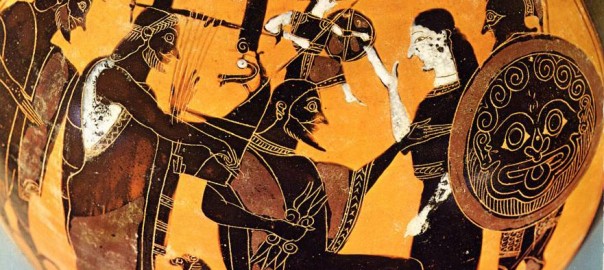


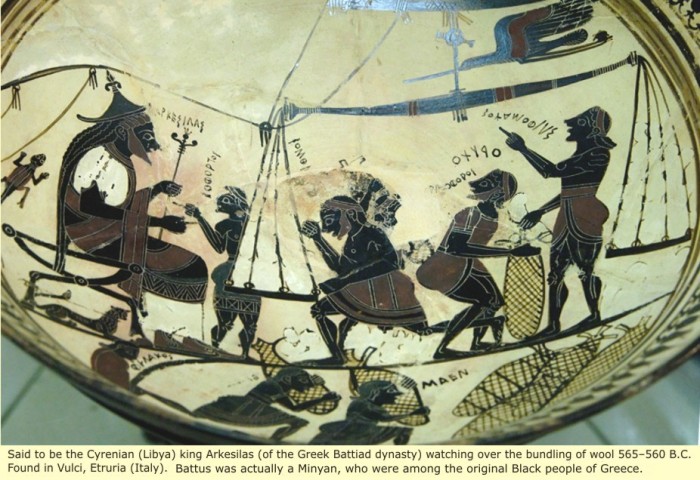

“All the hero Gods Theseus, Bacchus, Æsculapius, &c., were saviours and black saviours too. These black icons were made when man himself was black. He made his God after himself, and then said that man was made after the image of God.” Anacalypsis an Attempt to Draw Aside the Veil of the Saitic Isis, Volume 1, By Godfrey Higgins, PG 630
“Osiris and his Bull were black; all the Gods and Goddesses of Greece were black: at least this was the case with Jupiter, Bacchus, Hercules, Apollo, Ammon.The Goddesses Venus, Isis, Hecati, Diana, Juno, Metis, Ceres, Cybile, are black. The Multi-mammia is black in the Campidoglio at Rome, and in Montfaucon, Antiquity explained.” – Anacalypsis an Attempt to Draw Aside the Veil of the Saitic Isis …, Volume 1, By Godfrey Higgins, PG 138
Some Israelites, instead of fleeing into the Mediterranean, also migrated southward into African (Hamitic) lands. We will find that no matter where the Israelites migrated to after Egypt, they brought with them much of the traditions, culture and religious beliefs of the Egyptians. The Israelites who chose not to maintain the worship of the God of their Ancestors introduced the wisdom and pagan religion they hard learned from the Egyptians to almost all the colonies they established outside of Egypt; mixing pagan beliefs with the true religion of their Israelite ancestors. One of the many pagan beliefs exported by the Israelites from Egypt in to foreign countries was idolatry in the form of Animism and Luminary worship (i.e., Eastern Animal Zodiac worship).
“From what I have offered about the several steps which the Egyptians took in the progress of their superstitions and idolatry, it will be easy to determine what their religion was when Cecrops, Cadmus, or Danaus left Egypt; and consequently what religion or deities these men may be supposed to have introduced into Greece. The Egyptians had dedicated sacred animals to their sidereal deities before these men left them: all their other innovations were more modern, and consequently this practice these men carried with them into foreign countries. The Greeks, in the first days of their idolatry, worshipped, as the Egyptians did, the sun moon and stars, and elements. In after-ages they worshipped hero-gods; but these were not until about the time of Homer. Herodotus says expressly, that Hesiod and Homer introduced these deities… The Greeks worshipped their gods without any images of any sort, until after Oenotrus the son of Lycaon led his colony into Italy… Lycaon, the father of Oenotrus, was contemporary with Cecrops, the first of the travellers who came to Greece from Egypt; and most probably Danaus, the last of them introduced the image of a wolf, for the direction of his worship to Apollo Lycius; so that from all these circumstances it is very plain, that the images of animals were at first set up as idols in Greece, much about the time of, and by the direction of these men. As the Israelites made a calf in Horeb after their patterns, soon after Moses had left them out of Egypt…so much about this time the Greeks were led into the same sort of idolatry by the Egyptian travellers, who came to live amongst them.” – The sacred and profane history of the world connected, By Samuel Shuckford, PG 474
The same sort of idolatry (animism and luminary worship) that was practiced amongst the Israelites during the time if the Exodus (Aaron’s Golden Calf) was also being introduced into Greece at the same time by the same people who left Egypt; the Israelites. We will see this same Animism and Sun, Moon, and star worship arrive in Africa (and eventual India as well) as a result of the various migrations of Israelites from Egypt, as well the many different post Exodus migrations. It must be understood that the polytheistic paganism inherited by some of the Israelites during their residence in Egypt was an animism based on astrology. The animal symbols of the zodiac constellations represent archetypes of the spiritual beings that rule over these celestial bodies. This makes the veneration of the zodiac and involuntary worshipping of angels (Colossians 2:18) because the stars and constellations are spiritual powers that influence terrestrial affairs. The Egyptian spiritual system possessed detailed informationon how to consult these animal spirits and harness their powers, protection and guidance. This Egyptian spiritual system of zodiac worship, in the form of animism was dispersed into places as far as China because of the dispersion of the Israelites.
The association between animals, nature, spirits, elements and celestial constellations (animism) has been practiced for many generations by the Bantu peoples. However, the ancestral God and spiritual ruler of the Israelites, the God that freed them from the bondage of Egypt, revealed to Moses on the mountain by the name of I AM THAT I AM (Exodus 3:13-15), formerly known as the God Almighty/The Most High God (Exodus 6:3), emphatically warned the Israelites against idolatry and luminary worship.
“Thou shalt not make unto thee any graven image, or any likeness of any thing that is in heaven above, or that is in the earth beneath, or that is in the water under the earth.” – Exodus 20:4
“Now therefore hearken, O Israel, unto the statutes and unto the judgments, which I teach you, for to do them, that ye may live, and go in and possess the land which the Lord God of your fathers giveth you… Keep therefore and do them; for this is your wisdom and your understanding in the sight of the nations, which shall hear all these statutes, and say, Surely this great nation is a wise and understanding people. For what nation is there so great, who hath God so nigh unto them, as the Lord our God is in all things that we call upon him for? And what nation is there so great, that hath statutes and judgments so righteous as all this law, which I set before you this day?” – Deuteronomy 4:1, 6-8
“Hath a nation changed their gods, which are yet no gods? but my people have changed their glory for that which doth not profit… For my people have committed two evils; they have forsaken me the fountain of living waters, and hewed them out cisterns, broken cisterns, that can hold no water.” – Jeremiah 2:11, 13

“And the Lord spake unto you out of the midst of the fire: ye heard the voice of the words, but saw no similitude; only ye heard a voice… Take ye therefore good heed unto yourselves; for ye saw no manner of similitude on the day that the Lord spake unto you in Horeb out of the midst of the fire: Lest ye corrupt yourselves, and make you a graven image, the similitude of any figure, the likeness of male or female, The likeness of any beast that is on the earth, the likeness of any winged fowl that flieth in the air, The likeness of any thing that creepeth on the ground, the likeness of any fish that is in the waters beneath the earth: And lest thou lift up thine eyes unto heaven, and when thou seest the sun, and the moon, and the stars, even all the host of heaven, shouldest be driven to worship them, and serve them, which the Lord thy God hath divided unto all nations under the whole heaven. But the Lord hath taken you, and brought you forth out of the iron furnace, even out of Egypt, to be unto him a people of inheritance, as ye are this day.” – Deuteronomy 4:12, 15-20
“Hath a nation changed their gods, which are yet no gods? but my people have changed their glory for that which doth not profit… For my people have committed two evils; they have forsaken me the fountain of living waters, and hewed them out cisterns, broken cisterns, that can hold no water… Why trimmest thou thy way to seek love? therefore hast thou also taught the wicked ones thy ways. Also in thy skirts is found the blood of the souls of the poor innocents: I have not found it by secret search, but upon all these.” – Jeremiah 2:11, 13, 33-34
The records of the Israelites clearly state that it was they who taught the wicked ones their ways. I believe this to mean that it was the Israelites who left the worship of their God to worship the gods of foreign nations and taught the rest of the world all they had learned (and mastered), originally while in Egypt, to the gentile nations they subsequently came into contact with. This brief historical review into some of the beginnings of Israelite pagan practices provides confirmation of what the Biblical account proclaims. It is the Israelites who left Egypt and introduced the mysteries of Egypt to the foreign lands they sojourned to. In reference to our topic of Bantu as Israelites we return to examine Africa.
 Joseph Eidelberg, in his book Bambara, highlighted the presence of Israelite descendants migrating into West Africa during the Exodus. He records the Israelite influence he noticed amongst various African cultures; particularly focusing on the people of Bambara.
Joseph Eidelberg, in his book Bambara, highlighted the presence of Israelite descendants migrating into West Africa during the Exodus. He records the Israelite influence he noticed amongst various African cultures; particularly focusing on the people of Bambara.

Map of Bambara, also known as Bamana, and Bamanankan. Land of the Bamana people, a section of the Mandinka people, the founders of Mali
“In 1972, after returning from the Ivory Coast, the author published his first book, Bambara, a story about Hebrew biblical footprints left in ancient African cultures that uncovers, as a fascinating step by step puzzle, the forty-year mysterious journey through African coast, deserts, mountains and seas on the way from Egypt to Israel… [during] his engineering carrier, while managing large Israeli overseas engineering operations, including Iran and Ivory Coast, the author discovered some interesting linguistic and cultural similarities between the Hebrew language and Bambara, spoken by an African tribe in Mali.” – The Biblical Hebrew Origin of the Japanese People, By J. Eidelberg, PG xii, xi

Bambara people in upper Sénégal river valley, 1890. (illustration from Colonel Frey’s Côte occidentale d’Afrique, 1890, Fig.49 p.87)
The Bambara people (also known as the Bamana) are a Mandé people living in west Africa, primarily in Mali, Guinea, Burkina Faso and Senegal. The Bambara/Bamana are also said to be a branch of the Mandinka people. The Mandinka people and the territory of the Bamana people coincide with the area of West Africa called ‘Negroland’.
The cover of Joseph Eidelberg’s book, Bambara, clearly dipicts the area of West Africa. West Africa is also known as ‘Negroland’ and is the home of the Niger-Congo Bantu Israelites.
Negroland West Africa is not only the residence of the Bambara/Bamana people but also their distant relatives; the Yoruba people. The Bamana people and the Yoruba can both be connected to Ancient Egypt and the Israelites. Cheikh Anta Diop, in her book, Precolonial Black Africa, references the researcher Jonathan Olumide Lucas, who connects the Yoruba with Egypt.
“According to J. Olumide Lucas, the Yoruba during antiquity lived in ancient Egypt, before migrating to the Atlantic coast. He uses as demonstration the similarity or identity of languages, religious beliefs, customs, and names of persons, places and things. Abundant proof of intimate connection between the ancient Egyptians and the Yoruba may be produced under this head. Most of the principal gods were well known, at one time, to the Yoruba.” – Precolonial Black Africa, By Cheikh Anta Dio, Chapter X
Other researchers have also provided evidence of the Yoruba connection with Egypt. Dierk Lange, Professor emeritus Of African History at the University of Beyreuth in Bavaria Germany, in his article titled, Origin of the Yoruba and “The Lost Tribes of Israel,” went a step further and also connected the Yoruba with the Egyptians and the Israelites.
“According to the present opinion, the Yoruba are of local origin [African/Hamite], but this opinion reflects the great influence of post colonialism on African historiography rather than sober text-critical research. It involves the fallacious dismissal of the major traditions of provenance suggesting an origin of the ancestral Yoruba in the Near East. In fact, before the rise of academic African historiography in connection with the independence of African states around 1960, scholars relied more directly on the available traditions of Yoruba origin and they did some comparative research between Yoruba, ancient Mediterranean and Israelite cultures. On the basis of this evidence they suggested that the Yoruba immigrated from far away: either from Phoenicia, the Mediterranean world, Egypt, or Nubia (Biobaku 1955: 8–13; Lange 1995: 40–48).”
Other scholars have also pointed out connections between the Yoruba and the Israelites.
“What is crucial is that the Exodus from Egypt may have gone toward Israel with some element moving toward the western parts of Africa. This is because in Ifa there are so many striking similarities to ancient Egypt cosmology and some aspects of early Hebrew mysticism. There appears to be a striking similarity between the divination systems of Ifa and the Ancient Essene sect of Palestine. The number systems are too close for mere coincidence (Fatunmbi, 1991). Both are based on the same 256 marks used to organize the manifest forces of nature. These suggest a root system of which there are many inter-connecting branches… The Ifá system was known to have been in active use in these regions and to have traveled along the trade routes with other ideas and goods. The Black Hebrews have their own chronology of dispersion and influence from ancient times to areas in Egypt-Ethiopia and West Africa, especially to the West African peoples of the Ashanti, Yoruba, Nok, Hausa and Songhai (Ammi, 1982).” – The African Unconscious, By Edward Bruce Bynum, PG 230
The Ifá divination practiced by the Yoruba, which is connected to both Egyptian and Hebrew mysticism, is a form of Geomancy.
“An ephod (Hebrew אֵפוֹד) was an artifact and an object to be revered in ancient Israelite culture, and was closely connected with oracular practices and priestly ritual… In the book of Exodus and in Leviticus one is described as being created for the Jewish High Priest to wear as part of his official vestments (Exodus 28:4+, 29:5, 39:2+; Leviticus 8:7).” – http://en.wikipedia.org/wiki/Ephod
“Ifá – The most prestigious form of divination among the Yoruba. A type of geomancy (Literally earth divination; the oduns of Ifa are marked on a tray which represent the Earth) that depends on the generation of certain signs (oduns) and the interpretation of their meaning by means of a corpus of stories. Ifa has 256 oduns and it is said that there are at least 16 stories attached to each.” – Making the Gods in New York: The Yoruba Religion in the African American Community, By Mary Cuthrell Curry, PG 183
It is interesting to note that the Bambara/Bamana people, that Joseph Eidelberg identified as Hebrew Israelites, also practiced a form of geomantic divination. Although their form of geomancy is different from the Ifá system, it does have the number 16 in common with the Ifá system. The 16 stories attached to each of the Ifá oduns could possibly be related to the 16 divination symbols of the Bamana system.
Ron Eglash, is an American cyberneticist, professor of science and technology studies at the Rensselaer Polytechnic Institute, and author widely known for his work in the field of ethnomathematics, also made comparissons between the Ifá and Bamana divination systems in his book, African Fractals: Modern Computing and Indigenous Design.
“The Ifa system is what a mathematician would call “stochastic,” that is, it operates by pure chance. But a closely related divination system, Cedena, has a nonstochastic element—it is closer to what mathematicians call “deterministic chaos.” – African Fractals: Modern Computing and Indigenous Design, By Ron Eglash, PG 93
Dr. Eglash goes further to state that binary code was developed from the Cedena divination and that binary code, through Boolean algebra, which ultimately resulted in the creation of the modern digital computer. During is TED Talks presentation in 2007 he concluded that all PDAs, Laptops and every digital circuit in the world started in Africa.
“This myth [of African primitivism] is particularly ironic in the case of information technologies, given that the binary code appears to have a distinct African origin (Eglash 1997a). The modern binary code, essential to every digital circuit from alarm clocks to super-computers, was first introduced by Leibnitz around 1670. Leibniz had been inspired by the binary-based “logic machine” of Raymond Lull, which was in turn inspired by the alchemists’ divination practice of geomancy (Skinner 1980). But geomancy is clearly not of European origin. It was first introduced there by Hugo of Santalla in twelfth century Spain, and Islamic scholars had been using it in North Africa since at least the 9th century, where it was first documented in written records by the Jewish writer Aran ben Joseph. The nearly identical system of divination in West Africa associated with Ifa and Ifa was first noted by Trautmann (1939), but he assumed that geomancy originated in Arabic society, where it is known as ilm al-raml (“the science of sand”).The mathematical basis of geomancy is, however, strikingly out of place in non-African systems. Unlike Europe, India, and Arabic cultures, base 2 calculation is ubiquitous in Africa, even for multiplication and division. Doubling is a frequent theme in many other African knowledge systems, particularly divination. The African origin of geomancy — and thus, via Lull and Leibnitz, the binary code — is well supported.” – http://homepages.rpi.edu/~eglash/eglash.dir/ethnic.dir/r4cyb.dir/r4cybh.htm
The base 2 calculation of African divination may also have Israelite origins. Being that the Bamana and Yoruba (among many other tribes) have been identified as Hebrew Israelites by respected scholars and historians, it may not be a stretch of the imagination to surmise that the base 2 calculations of African mathematics, divination, and the foundation of modern binary code, may have origins with the Hebrew Israelite High Priests’ Umim & Thumim. The Urim and Thummim were two stones within the breastplate of the High Priest that were used to consult the Most High power I AM (Exodus 28:30) who is beyond infinity. The Urim and Thummim were used to ask binary questions to receive binary answers (yes/no, hot/cold, left/right, etc.) This system also seems to have been imported to the far east as well in the form of yin-yang or en-yo.
The close relation between the divinatory systems of the Ifá and Cedena (Bamana) that Dr. Eglash pointed out most likely stem from them both the Yoruba and Bamana peoples being related from a common origin. They are both West Africans who are descendants of Israelites that left Egypt. The forms of divination based on binary code (yin-yang) and the 16 symbols are reminiscent of the Urim and Thummim of the Israelite High priest’s breast plate which consisted of 12 stones aligned within the square of 4 corner points (12+4=16), but, this is only my personal conjecture. However, as a matter of fact, DNA evidence also confirms that the Israelites left Egypt and migrated into Western, Eastern and sub-Saharan African areas.
DNA analysis of the mummy of Pharoah Rameses III declares that he possessed the E1b1a gene. This gene connects the sub-Saharan (Niger-Congo/Bantu/Israelite) Africans, also known as Contemporary Equatorial Africans, to the Ancient Egyptians. The fact that Pharoah Rameses III possessed the E1b1a gene is very significant because it reveals the association between the ancient Egyptians and the sub-Saharan Africans who have been identified as the Israelites.
“There seems to be nothing improbable in these Ethiopians being the tribe of the Jews—the tribe of Jacob or Israel. I think these Ethiopians did come under Jacob, and did settle in Goshen, and gave the names of Maturea and Avaris to the city in which they dwelt.” – Anacalypsis an Attempt to Draw Aside the Veil of the Saitic Isis …, Volume 1, By Godfrey Higgins, PG 399
“Haremhab was succeeded by another general, Ramesses, who stemmed from Avaris, the old Hyksos capital, and whose family traced its descent from the Hyksos kings. Though Ramesses (I) reigned but briefly (ca. 1306-1305), he passed the power to his son Sethos I and thus became the founder of the Nineteenth Dynasty.” – A History of Israel, By John Bright, PG 112
The Hyksos rulers were indeed Israelites.
“Thanks to the works of Josephus, a Jewish historian of the first century CE, we can put this altogether. In his work, Flavius Josephus’s Against Apion Book I, we are given an account of the Hebrews in Egypt by a priest of Egypt named Manetho… The part we are concerned with is when the Hyksos are mentioned. These are the people, Manetho tells us, were the Israelites, and Josephus agrees with him.” – The Greatest Story Never Told, By G. A. Hood, PG 27
“It was John H. Breasted who deciced to read the name without the final sign for kha, which he took to imply a city. This left him with the city of Zarw (Zaru) the same name as the fortress. The story of Zaru is therefore that it was an Egyptian frontier fortress from the time of the Twelfth Dynasty when it was called the Pathes of Horus. It was later rebuilt by the Hyksos kings with strong walls and became known as Avaris… When Joseph’s Israelite family came to Egypt, not to allow them into Egypt proper Amenhotep III gave the city of Zaru to his queen, Tiye, and her Asiatic shepherd relations. On becoming king after the Amarna rebellion, Horemheb turned the city back into a prison under the mayorship of Ramses, later to become Ramses I, who established the Nineteenth Dynasty. It was then that it was rebuilt and received its biblical name, Pi-Ramses, from its mayor. The city eventually became the northern residence of the first three kings of the Nineteenth Dynasty, Ramses I, Seti I and Ramses II, who embellished the name.” – The Hebrew Pharaohs of Egypt: The Secret Lineage of the Patriarch Joseph, By Ahmed Osman, PG 101
“According to Exodus 1:11, the Israelites were forced to build the store city of Rameses, therefore, Ramses II must have been ruling at the time.” – Tyndale Bible Dictionary, edited by Walter A. Elwell, Philip Wesley Comfort, PG 456
“Jewish scholars attempt to identify the pharaoh of the Bible with either Ramses II or Ramses III.” – Here Lies the Bible, By Jeffrey Pike, PG 57
Other scholars associate Ramses III with the Judges period of Israelite history and records the pharaoh fighting with the Israelites. The land of Canaan was also considered to be a province of Egypt during this time. Whatever the case, outside of the results of modern DNA research, a strong connection between Pharaoh Ramses III and the Israelites is already apparent.
“According to the conventional Sothis-based chronology, Pharaoh Ramses III ruled toward the end of the period of the Israelite Judges.” – Can the Bible Be Trusted?: Old and New Testament Introduction and Interpretation, By Uuras Saarnivaara, PG 237
“Mc Curdy (Hist. Proph., and the Mon.) places the Exodus in the 20th dynasty, in the latter part of the reign of Ramses III., or immediately after his reign…The children of Israel, however, during the reign of Ramses III (1180-1148) may have been wandering in the desert and taking possession of the country E. of the Jordan. This would allow about 50 years from their departure from Egypt to their entrance into W. Pal., corresponding roughly with the biblical 40 years. This much at least seems certain, that Pal. Was for many centuries an Egyp. Province, and that the conquests under Joshua cannot well have begun until the close of the 19th dynasty, and that the conquests under Joshua cannot well have begun until the close of the 19th dynasty, and probably the close of the reign of Ramses III.” – Dictionary of the Bible: A-Fests, By James Hastings, PG 399

The wall from which this fragment came almost certainly showed Sebekhotep, an important treasury official in the reign of Thutmose IV (c. 1400-1390 BC), receiving the produce of the Levant (Land of Canaan) and Africa, which he then presented to the king.
“Jacob Israel was not only the eponym and the specific ancestor of Israel, he was also the patriarch who, according to tradition, led the Israelites into Egypt. Secondly, there is the archaeological evidence from the fact that by far the highest density of Hyksos scarabs is to be found in the territory now known as the West Bank, which at the end of the Bronze Age was the Israelite heartland. It is also interesting to not that the computation of the chronology of the Book of Judges, mentioned above, gives a date that is compatible with a mid-16th-century expulsion of the Hyksos. The equation of the Hyksos and the Israelites is not new.” – Black Athena: The archaeological and documentary evidence, edited by Martin Bernal, PG 357
“Apion, and Egyptian priest in the first century B.C., calls the Israelites renegade Egyptians.” – Dan, The Pioneer of Israel, By Colonel J.C. Gawler, Keeper of the Crown Jewels, PG 11
History bares witness to the fact that there was strong intermingling between the Egyptians of Ramses III’s during his reign and the Israelites comprised the majority of the population. This fact would explain why the haplogroup E gene would no longer be found in Egypt after the Israelite Exodus. Moreover, the E1b1a gene is patrilineal which means it is passed from father to son. The Bible also records that the seed of a man is passed from a father to his children and so it is the father’s lineage that determines the nation and bloodline the children belong to—not the mother’s. For this reason the biblical record always lists lineages from father to son and significant women in the record are almost never mentioned without also mentioning who their father was.
Therefore, if the sub-Saharan Negro’s share the same patrilineal DNA as the Pharaoh Rameses, and both the Negroes that left Egypt and Rameses III are associated with the Hyksos Israelites, then it becomes clear that the sub-Saharan Negros are actually the people written of in the Holy Bible. The relocation of this patrilineal gene (Haplogroup E) from Egypt into sub-Saharan Africa supports the records of the Hebrew Israelites as well as the indigenous traditions of various West African Negro tribal origins.
“In human genetics, Haplogroup E-V38 is a human Y-chromosome DNA haplogroup. It is the phylogenetic term for the series of unique sequence variants on the human Y-chromosome. It is often found in African males and their descendants and is heritably passed in lineage from father to son. Geneticists study these variants in populations to find the evolutionary lineage to a common male human ancestor. It can also be referred to in phylogenetic nomenclature by names such as E1b1a (although the exact definition of phylogenetic names can vary over time)… E-V38 has two basal branches, E-M329 and E-M2, the former is almost exclusively found in Ethiopia, while the latter is the predominant lineage in Western Africa, Central Africa, Southern Africa, North Africa and the southern parts of Eastern Africa… Much of the population that carried E-M2 retreated to southern West Africa with the drying of the Sahara. These later people migrated from Southeastern Nigeria and Cameroon to Central Africa, East Africa, and Southern Africa causing or following the Bantu expansion. According to Wood et al. (2005) and Rosa et al. (2007), such population movements from West Africa changed the pre-existing population Y chromosomal diversity in Western, Central, Southern and southern East Africa, replacing the previous haplogroups frequencies in these areas with the now dominant E1b1a1 lineages.” – http://en.wikipedia.org/wiki/Haplogroup_E-V38

 LEFT: Pharoah Ramses II or III RIGHT: Rwanda Tutsi with Amasunzu hairstyle. Tutsi are a Bantu people with obvious connections to Egypt.
LEFT: Pharoah Ramses II or III RIGHT: Rwanda Tutsi with Amasunzu hairstyle. Tutsi are a Bantu people with obvious connections to Egypt.

Modern day map African area distribution of haplogroup E1b1a (E3a-M2). Rosa et al. (2007). Notice, it is completely absent from Egypt despite the Egyptian pharaoh Rameses III (and presumable all his Hyksos lineage forefathers) possessing the same gene.
“A big expansion of peoples throughout Sub-Saharan Africa occurred after the introduction of agriculture 5,000 years ago. During the Bantu expansion people carrying Haplogroup E(not including E1b1b) lineages dispersed across much of Sub-Saharan Africa from their homeland near the border between Nigeria and Cameroon. The haplogroup most often associated with this expansion is E1b1a, which constitutes up to 48% of the African male gene pool. The presence of E1b1a lineages outside Africa can typically be associated with events that occurred after the Bantu Expansion, such as the trade in African slaves or the Moorish occupation of Iberia.” – http://en.wikipedia.org/wiki/African_admixture_in_Europe
“Haplogroup E1b1b (formerly known as E3b) represents the last major direct migration from Africa into Europe… E1b1b lineages are closely linked to the diffusion of Afroasiatic languages… One might wonder why E1b1b is more common in the southern Balkans (Greece included) and southern Italy than anywhere in the Middle East, except in Egypt. What’s more, the dominant form of E1b1b in Southeast Europe is E-V13, a subclade absent from the Horn of Africa and only present at low frequencies in North Africa (peaking in Lybia), the Levant and western Anatolia… E-V13 is more common in Lybia today than anywhere in the Near East, which concords with central North Africa as being a potential source for the European E-V13 (and other subclades of M78). In fact, the small presence of E-V13 in the Near East could be better explained by the extremely long Greek presence in the eastern Mediterranean from the time of Alexander the Great until the end of the Byzantine domination over the region during the Middle Ages… There is clearly a radiation from the Greece (where E-V13 makes up approximately 30% of the paternal lineages) to the East Mediterranean (where the frequency drops to under 5%)… A strong argument in favour of E1b1b crossing directly from North Africa to southern Italy is that South Italians have more African admixture than people in the Balkans, Greece or Anatolia. This is true of the Northwest African admixture and the East African (Red sea) admixture… In Europe E-M123 is only observed at frequencies over 2.5% in southern Italy, in the Spanish region Extremadura (4%), and the Balearic islands of Ibiza and Minorca (average 10%). E-M123 could have been brought to the Mediterranean coasts of Europe by the Phoenicians, and to Italy by the Etruscans (from Anatolia). The Romans might have contributed to spreading it around their empire at low frequencies.”
Not only do many old West African traditions and modern historical scholarship concur, that modern West African populations migrated come from ancient Egypt, but DNA evidence also seems to indubitably support the previous perspective. Moreover, it is important to note that the map of Africa showing the frequency of the E1b1a gene in comparison with the Bantu expansion map demonstrates that after the expulsion of the Hyksos and the following Exodus of the Israelites, the presence of E1b1a almost completely leaves Egypt and appears in Bantu Israelite areas. Although the Bantu Negroes may physically look like the Hamitic ancient Egyptians or their Hamitic cousins, the Cushite Ethiopians, the Negroes possess a different bloodline.
“E-V38 has two basal branches, E-M329 and E-M2, the former is almost exclusively found in Ethiopia, while the latter is the predominant lineage in Western Africa, Central Africa, Southern Africa, North Africa and the southern parts of Eastern Africa.” – http://en.wikipedia.org/wiki/Haplogroup_E-V38

A map depicting the movements of human populations bearing haplogroup E (M2) movement from Levant into Africa, Mediterranean and Central Asia
“E1b1a. M2 – E1b1a (M2) is prevalent throughout Africa, except in North Africa. It peaks in West Africa and is associated with the spread of agriculture or new farming methods by the Bantu to Sub-Saharan and Equatorial Africa regions, where it especially prevalent. The Bantu migration and dispersal of E1b1a (M2) appears to have reached as far as South Africa… A barrier of the Cushitic language and culture in Northeast Africa has been proposed to explain the limited introgression of the Bantu E1b1a/M2 subclade in these northern regions. Nevertheless, the spread of the Bantu is fairly extensive and their linguistic family (Niger-Congo) is the most widely dispersed language family in Africa, supporting the Y-chromosome evidence for the spread of the Bantu people through wide portions of Africa and providing a strong example of correlation between language and phylogeny in Africa. On the other hand, the widespread distribution of Bantu and the E1b1a/M2 subclade, is responsible for a reduced geographic structure or the correlation between Y-chromosome phylogeny and a specific geographic location, thus acting to somewhat homogenize the populations.
The E1b1a/M2 subclade in Oman may be due to recent slave trade with Africa, but since M2 is highest in the West (e.g. Senegal) and drops off significantly to the North and East, it has been speculated that these slaves must have come from a fairly far distance in Central or West Africa.
E1b1a/M2 is also the most common Y haplogroup in African Americans (50-75%), a result of slave trade from Sub-Saharan Africa. In South America, the estimates are ~8% for the M2 subclade. Subclades of E1b1a (defined by SNPs U181, M291, U174, U290, U175) have been examined only in African and European American populations, where they are present in the former and absent in the latter. U174 or E1b1a7a is the most prevalent at about 24% of African Americans.” – http://www.geneancestry.com/learning-center/article/26

This map shows that E1b1a is not relegated West Africa alone. The presence of E1b1a seems follow the Israelite migration routes shown on the map above.
“Branch: M191 The E1b1a7 (M191) subclade is closely associated with the phylogeography of the precursor E1b1a (M2) and the Bantu population that is responsible for its dissemination. It has a frequency peak (15-45%) in a belt through Sub-Saharan and Equatorial Africa. Modest amounts have been detected in the Arabian Peninsula (3-6%). It is also represented by the high frequency of its descendants, e.g. subclade E1b1a7a (U174) in African Americans.” – http://www.geneancestry.com/learning-center/article/26
Beyond these previously mentioned facts, we also notice that the great architecture, sciences and the pagan religion of Egypt, dwindled in excellence after the Israelite Exodus (removal of E1b1a/E-M2 dna) and soon after, completely lost the greatness it once maintained.

Haplotype E DNA frequency map compared to Bantu subsaharan migration map. E1b1a (U209) This population represents the backbone of the Bantu expansion, emerged and expanded out of the Bantu Urheimat. E1b1a (U290) A primary marker of African slavery in the USA, Important lineage in Southern Cameroon.
In fact, so important were the Israelites and their bloodline to the greatness of Egypt that the wizards of Egypt sought to hide Joseph’s body from the Israelites after his death fearing the results of an Egyptian prophesy. The prophecy stated that if Joseph’s bones should ever leave the land of Egypt then Egypt would be doomed and it’s land filled with darkness. I believe this prophesy was in reference to the departure of the Israelites from Egypt during the Exodus since it was Moses who fulfilled this prophecy when he took the bones of Joseph with him as he and the Israelites left Egypt.
“… And they [the Israelites] took them up secretly during a war of the Egyptians. For the bones of Joseph the Egyptians guarded in the tombs of the kings. For the sorcerers told them, that on the departure of the bones of Joseph there should be throughout all the land darkness and gloom, and an exceeding great plague to the Egyptians, so that even with a lamp a man should not recognize his brother… And they were in Egypt until the day of their departure by the hand of Moses.” – Testament of Simeon 3:14-15, 17
“And Moses took the bones of Joseph with him: for he had straitly sworn the children of Israel, saying, God will surely visit you; and ye shall carry up my bones away hence with you.” – Exodus 13:19
The darkness that the Egyptian sorcerers claimed would befall Egypt seems to be the result of the loss of the light or wisdom possessed by the Israelites. Again, the greatness of Egypt ceased after the Israelites left the land but that same greatness can be found in all the places the Israelites migrated to after they left Egypt.
“Jesus answered, Are there not twelve hours in the day? If any man walk in the day, he stumbleth not, because he seeth the light of this world. But if a man walk in the night, he stumbleth, because there is no light in him.” – John 11:8-9
“Ye are the light of the world. A city that is set on an hill cannot be hid. Neither do men light a candle, and put it under a bushel, but on a candlestick; and it giveth light unto all that are in the house. Let your light so shine before men, that they may see your good works, and glorify your Father which is in heaven.” – Matthew 5:14-16
Now, that it has been established that the Bantu are Israelites who left Egypt we can now begin to make connections between the Bantu, their expansion and the wisdom they possessed (mixture of Egyptian and Israelite traditions) and introduced around the globe.
Before leaving off from setting the foundation of associating the Bantu sub-Saharan Africans with the Israelites, we must address the early east African Bantus as well—the Zanji. We have already briefly discussed the early arrival of Bantu Israelites in Africa as a result of Israelite migrations taking place around the time of the Exodus (1500 BC). However, the next noteworthy influx of Israelites into Africa occurred around the time of the Assyrian Captivity of the Northern Kingdom of Israel (740 BC). The subsequent migrations of Israelites in to Africa and other foreign lands around the world would occur as a result of all the following captivities of the Israelites as prophesied by Daniel in Nebuchadnezzar’s dream. The movements of Israelite populations during the captivities of Nebuchadnezzar’s dream (Babylonian, Persian, Grecian & Roman) will be covered in separate blog’s. Again, let us close with a brief review of Israelite historical presence in the East African Negroland—Al Zanj (the land of the Negroes/Zanji).
An Israelite historian helps provide critical information concerning the early East African Zanji Bantu Israelite presence.
“According to 9th-century Jewish traveler Eldad ben-Mahli (Eldad the Danite), the Ibo Benei-Yisrael may be descendants of members of several of the “Lost Tribes of Israel.” He contended that the Jews of Africa came from the tribes of Dan, Naphtali, Gad and Asher, who had fled the Land of Israel so as not to participate in the civil war between Judah and Israel during the time of Jereboam’s succession and reign over the Northern Kingdom (922-901BCE or 931-910 BCE). Eldad contended that these Jews originally settled in Havilah, beyond the rivers of Ethiopia. With them, they had a copy of the Tanach, less the books of Esther and Lamentations. These Jews had no knowledge of the Mishna or Babylonian Talmud…” – http://www.jewishvirtuallibrary.org/jsource/vjw/Nigeria.html
“According to the story related by Eldad the Danite, who had it told to him by his ancestors, who in turn were told about it by their ancestors from generation to generation, back to those fateful days, the Ten Tribes were not lost at all. Eldad the Danite related that his own tribe, the Danites, did not wait to be exiled. When the Assyrian empire grew strong and mighty, they saw that there was no hope for them to remain free. Moreover, the Kingdom of the Ten Tribes was at war with the Kingdom of Judah, and the Danites did not want to fight against their own brethren. So they decided to leave the Land of Israel and find a safe place for themselves. It was in the eighth year of the reign of Ahaz of Judah, that is, in the year 3191 (fourteen years before the fall of Samaria) that the Danites took their wives and children, their sheep and cattle, and left the Land of Israel. They went by way of Egypt further down the upper Nile River and settled in Ethiopia, in the land of the negroes of East Africa. The Danites were great warriors, and after fighting many battles against native black tribes, they established themselves securely, with a kingdom of their own.
Later on, after the Destruction of the Beth-Hamikdosh, three more tribes joined the tribe of Dan, Eldad related they were the tribes of Naftali, Gad and Asher. The four tribes lived side by side in peace and brotherhood. The region where they lived was a fertile one. The only trouble was that the surrounding black tribes were unfriendly. The four tribes had to fight them constantly. So each tribe went to war for three months in the year, coming back with much spoil and with many slaves, which they divided among all the tribes. Their elders and scholars received a greater share of the produce and riches, so that they could study the Torah in peace and security.
Yes, Eldad related, they are in possession of the Torah. They have the Five Books of Moses and most of the Books of the Prophets. But they did not have the Book of Esther, nor did they know anything about the festival of Purim, because the miracle of Purim happened many years after the Destruction of the Beth-Hamikdosh, and these four tribes were not in Persia at that time.
Being separated from the rest of the Jewish people, the four tribes did not know about the great Jewish Sages, the Tanaim and Amoraim, the authors of the Mishnah and the Gemara, and they were not in possession of the Talmud. But they observed all the laws of the Torah and the traditions. As they were taught by their elders and scholars, who in turn received traditions from their ancestors, from generation to generation, back to Joshua and Moses. Indeed, they were always taught by their elders: “These are the words of Joshua, who received the Torah from Moses, who received the Torah from G-d.” Eldad the Danite spoke only Hebrew, and he said that all the Jews of his tribe, as well as the other three tribes spoke only the Holy Tongue.” – http://www.chabad.org/library/article_cdo/aid/112285/jewish/Eldad-Hadani.htm
“An additional theory states that North African Jews traded and traveled within the West African Kingdoms of Mali, Songhai and Kanem-Bornu. Jews are believed to have been a prominent demographic in these empires. It is even thought that several rulers of the Songhai empire had Jewish roots. It appears however that Judaism in the West African empires came to an abrupt end when Askia Muhammad came to power and in 1492, ordered that all Jews convert to Islam of face expulsion.
This map shows The SAHEL corridor through CHAD into Mali the path the Hebrew communities took from East Africa.
Another theory maintains that Jews traveling with trade caravans from Northeast Africa moved through West Africa. According to certain accounts, such as Travels in North Africa by Nahum Slouschz, Jewish identity can be found in North Africa since the founding of Carthage, specifically, descendants of the tribes of Zevulun and Asher. Persecution and trade have been the major influencing factors in how the Jews migrated through Africa. During periods of Islamic persecution and for the purposes of trade, Jews moved from communities in Egypt, Ethiopia, Tunisia and Morocco to more remote regions of North and West Africa.
The decline of the Jewish communities of West Africa can be traced to the arrival of Muslim invaders in the 14th and 15th centuries. North and West African Jews banded with other local communities of Berbers, Christians and Greeks to ward of the invaders, but eventually succumbed. Many were forced to convert to Islam, sold into slavery or simply massacred. In the face of this persecution written traditions, such as the Torah, were lost. The Ibo Benei-Yisrael, though having no written evidence of their Jewish heritage, maintained a strong oral tradition and practiced many Jewish customs in secret. Records of these medieval Jewish communities, found in the Timbuktu, Mali Islamic Library, indicate the presence of Jewish families in the region before the arrival of Islam in the 1300’s CE.” – http://www.jewishvirtuallibrary.org/jsource/vjw/Nigeria.html
The Ibo in fact, because they continued to practice the religion and customs of their Israelite ancestors in secret, eventually became marginalized and despised by many surround tribes.
The Ibo maintained knowledge of their ancient traditions and have even been identified as Israelites by modern politicians.
“These be the sons of Leah, which she bare unto Jacob in Padanaram, with his daughter Dinah: all the souls of his sons and his daughters were thirty and three. And the sons of Gad; Ziphion, and Haggi, Shuni, and Ezbon, Eri, and Arodi, and Areli.” – Genesis 49:15-16
Although we were suppose to conclude with a brief overview of East African Israelite presences, there are two further quotes that I would like to add. The last two quotes will bring us back to southwest Africa where we can identify the Congo, one of the original areas of the Bantu expansion, as being an area densely populated with Israelites.
“The Kingdom of Loango, also known as the Kingdom of Lwããgu, was a pre-colonial African state from approximately the 15th to the 19th century in what is now the Republic of the Congo… Loango exported considerable copper to the European market, and was a major producer and exporter of cloth.” – Kingdom of Loango, Wikipedia
“A fact worthy the attention of travelers is, that, according to Oldendorp, The kingdom of Loango contains black Jews, scattered throughout the country ; they are despised by the Negroes who do not even deign to eat with them ; they are occupied in trade, and keep the sabbath so strictly that they do not even converse on that day; they have a separate burying ground, very far from any habitation. The tombs are constructed with masonry, and ornamented with Hebrew inscriptions… M. Ehr mann, finding it impossible to explain the origin of these Jews, doubts the reality of the fact; Busching, however, Michaelis, and Zimmermann, do not hesitate to admit their existence; Bruns considers them as descendants of the Falashes of Habesh, or Abyssinia; and Sprengel wishes them to be considered as the descendants of Portuguese Jews, who, having quitted their country, are no longer afraid to profess openly the religion of their fathers.” – A system of universal geography: or A description of all the parts of the world, By Conrad Malte-Brun, Jean-Jacques-Nicolas Huot, PG 101
The flag of the Kingdom of Loango seems to be symbolic of the hand of Christ as described in Revelations
“And he had in his right hand seven stars: and out of his mouth went a sharp twoedged sword: and his countenance was as the sun shineth in his strength… The mystery of the seven stars which thou sawest in my right hand, and the seven golden candlesticks. The seven stars are the angels of the seven churches: and the seven candlesticks which thou sawest are the seven churches.” – Revelations 1:16, 20
– two stars represent the two eyes of the sovereign, who is constantly watching his people;
– two stars represent the two ears of the sovereign, who is paying attention to the requests of his councillors and of his people;
– two stars represent the two nostrils of the sovereign, who is very concerned by the problems of his people. Powered with a very subtle sixth sense, the sovereign is able to establish a link between the present and the future;
– a figure [I guess, a star] represents the mouth of the sovereign, used to educate the people and deliver an impartial justice.” – Kingdom of Loango Flag, CRWFlags.com
It should now be somewhat more apparent that Israelites are scattered throughout all parts of Africa. Just because someone lives in Africa does not make them a Hamite and it would appear that the majority of Africa is populated by descendants of Hebrew Israelites. Now that we have established this fact, we can explore history further to see the contributions these Israelites have made around the world. Music, medicine, and many other modern technologies can be credited to these people. The same people who made Egypt great exported that same greatness in all the places they travelled. Above all, this information confirms the truth of the biblical record and affirms the truth of the God who directed its composition. The Bantu Africans and the related groups are indeed Israelites.
Question, comment, concerns?
CONTACT: NasiResearch@instruction.com
OTHER RELATED TOPICS
Bantu Africans are Israelites (pt I)
Scythian Israelites: Aryans in Africa & Abroad
Abraham and the Wisdom of the Egyptians








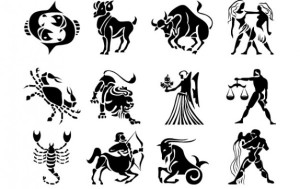

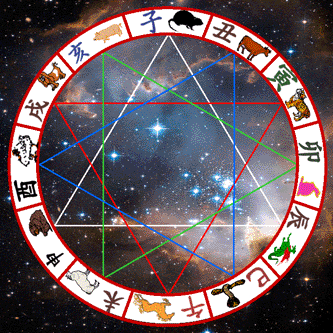




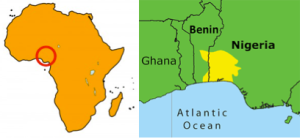








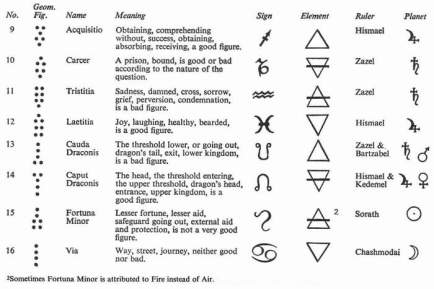









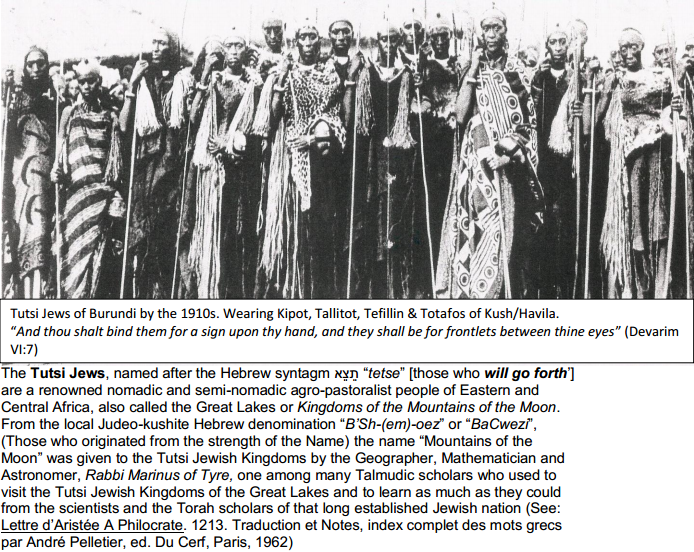


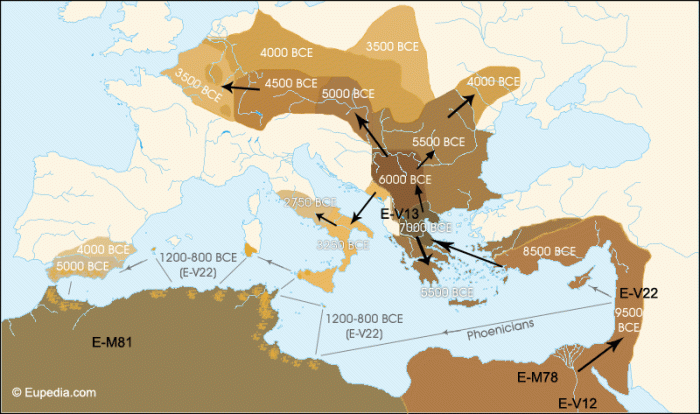





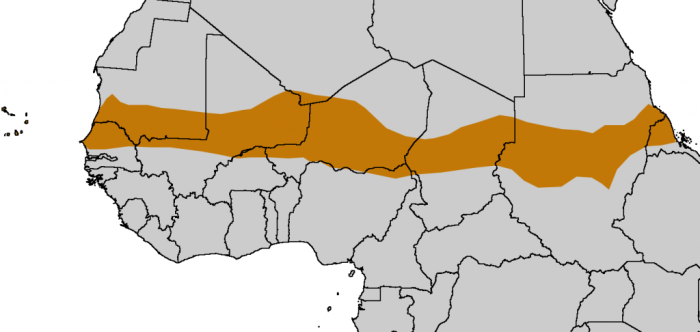







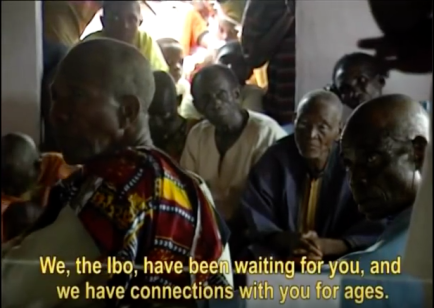
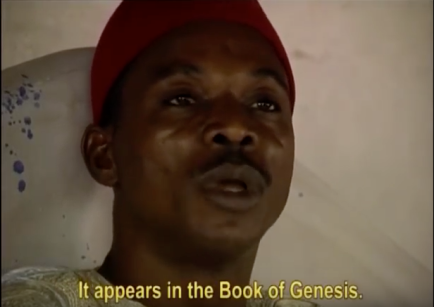


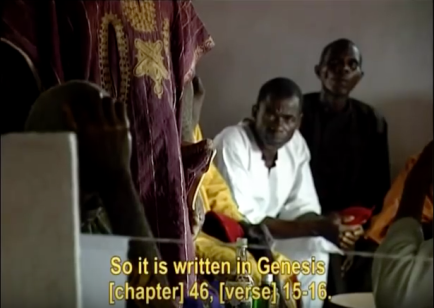


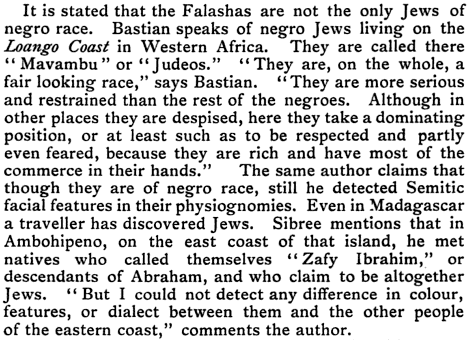

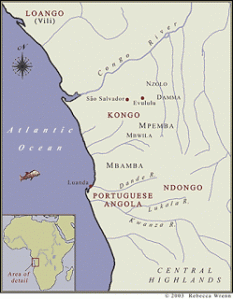


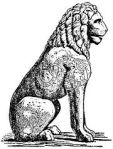

What an awesome study you have been blessed to author ach. You were extremely comprehensive in your approach, and highlighted so many important topics and aspects of the Israelite diaspora into Africa, pre-Trans-Atlantic/Zanji slavery period, that anyone whom reads your work should, ultimately, be blessed.
I am thankful to our Father in heaven for the guidance that He has provided you in researching and articulating your findings in such a way as to essentially leave no stone unturned. Stay prayerful, as a hedge of protection around you is surely warranted.
Shalawam,
Yachacad
LikeLiked by 1 person
Reblogged this on PROPHECY NEWS AND VIEWS and commented:
Black Americans and Blacks around the world with ancestory that extends from the transatlantic slave trade and the Arab slave trade pay close attention to this posting THESE ARE ANSWERS TO WHO YOU ARE ! I am glad I ran across this blog site view all three postings reblogged on this site. THE TRUTH HAD TO COME OUT AND HERE IT IS ! (Prophecy News And Views)
LikeLiked by 1 person
Oh Praise To The Most High This is AWESOME I had to share your blog postings on my blog Thank you so much for this information I have been searching the web for a page like yours . 🙂
LikeLiked by 1 person
How are you all?I am a bantu and a believer in the messiah.I have been following the study for some time now.My own people the Kikuyu have been associated with the hebrews.
After reading several blogs recently I had to pray to the God of Israel,I didn’t want confusion,I asked God to reveal to me if what i had learnt was true.Guess what!Our God is so faithful,I got the answer the same night .I was given two words,whose meaning i didn’t know,”merekesh” and “ashakara”.i’ve looking for the meanings and its very interesting what i found.I found ashkara instead of ashakara which meant “I agree”.Splitting Merekesh,I found “kesh” is a rare word for lost sheep and sacrificial sheep for that matter,as used in Ps 119:176(chaimbentorah.com).I found mere means sea of bitterness,rebelliousness!Is this a characteristic of our people to Elohim?I also got this to say,the current form of judaism will not help us,faith in Elohim through Yahshua will.For Yahshua comes to separate the sheep from the goats.All misery,mistreatment he will avenge.”For revenge is mine”says the most High.
LikeLiked by 1 person
I am grateful for this information, and for people who made it possible for us to access it. Give Thanks .
LikeLiked by 1 person
I am Bantu but I am Muslim as well as I believe in Abraham and Musa
LikeLiked by 1 person
Hello Ahmed and thank you for your comment. It is not my place to direct your spirituality an choice of worship but I would suggest that if you are bantu it would be wise to search out the God and customs of your ancestors rather than those you have inherit from the arab son’s of ishmael as islam is their own creation, loosely based off of the teachings of the Hebrew Israelites. I would hope that you are aware of Abraham being that he was the father of Ishmael, the progenitor of the Arabs, however It was through Isaac that the promise to Abraham was preserved, not Ishmael. From Abraham to Isaac and from Isaac to Jacob whose name became Israel. The Bantu people are comprised of different waves of the 12 tribes of Jacob/Israel who immigrated into Africa and later forgot their own heritage that was replaced by the Arab culture and religion after 600 AD upon their conquest of Northern Africa. Their influence clearly last until this day and thus you are a Bantu Arab but Arab is your adopted culture, not the culture of your Bantu ancestors who ultimately were Hebrew Israelites, not Arabs/Ishmaelites. Thank you again for reading and may the Most High continue to bless you through your life’s journey.
LikeLiked by 1 person
I am a Bantu and I have recently come accross an article that suggests a connection with Mguni my ancestor and one of Abrahms sons Naphatali, more specifically one of he’s grandsons Guni (kingdomofzion.co.za/Naphtali.html). As a Zulu I feel like my people are truly lost and that we have been lied to and have lied to ourselves for far to long, so at times I find such information to be very hard to belive. Even though a large amount of evidence points to this being very much true. The question is now am I Christian or am I a Bantu? Should I forget the culture of my forefathers or should I embrace it?
LikeLiked by 1 person
Thanks be to the most High God for the insight He’s given you.I have become all the more interested in research about our people.Recently I came across thefollowing about Kikuyu language(Bantu) and hebrew words:
Kikuyu. Hebrew
awa. abba. father(in address)
shoro. shofar. ram’s horn
mutana… matanah. (kik-generous,heb-gifts)
tumiya! dumiya. (kikuyu-silence! heb-noun,silence)
maae. mayim water
theka. tseka. laugh
maruru. meror/marah. bitterness
Is there semblace and is this coincidence?
Thanks.
LikeLiked by 1 person
Man we should meet am also a Bantu in Kenya and I have recently woken up from Christianity pagal practises .I believe making a network for those that wake up in Kenya would be helpful to help us be more closer to the Most High
LikeLiked by 1 person
Thanks be to the most High God for the insight He’s given us. Kubasucleo send me your email and we can discuss futher.
LikeLike
that”s my email kubasucleophas@gmail.com
LikeLike
John Kangui
May the God of heaven bless you brother John Mwangi.Now that we know we are Israelites let’s give God the glory and lead holy live.Let’s tell our brethren who we are.This will bring a very great awakening in Africa.I am a bantu of Kamba tribe in Kenya
LikeLike
Ahahahahaha! Interesting! Here in uganda (seka) means laugh.
LikeLike
They are not false cognates;they are one and the same…
LikeLike
Praises to the most high .You have answered my questions now I am sure that I am a descendant of Jacob .May The Most High bless the work of your hands .The infprmation in your article its very detailed in way that I now feel I know it all about the origin of the Bantu.
LikeLiked by 1 person
Yes..we should make a network for those of us in kenya that have woken up from this christianity paganism…am a kikuyu and av been to this truth for some time …and blessings to you brother…our heavenly abba is waking us up to realised we are the true israelites….peace and mercy to us….we should create a network please…
LikeLike
Hi Kelvin. yes we should please send me your email address and we can wake other people up.
LikeLike
here is my email address kubasucleophas@gmail.com
LikeLike
Kelvin here is my email address kubasucleophas@gmail.com. I am a marachi Luhya . I will soon be relocating to Nakuru for my higher studies
LikeLike
Brethren ,may The Most High GOD,The God of Abraham,Isaac and Jacob bless you all together with the researchers.I am John Kangui from Kenya and I am a comitted christian ,worshipping Jehovah God of Abraham Isaac and Jacob(Israel). I love God and I have very very deep love and affinity for Israel and the Jews world wide.I really long to meet them,stay with them,host them and interact with them.I nicknamed myself..Mu Isilaeli..meaning An Israelite in kikamba language ,one of the Bantu tribes here in Kenya, long time ago.My fellow villagers call me by this name.Little did I know God would reaveal this mystery to me,his humble servant.Glory be to His Name forever and ever.Amen.
I have been wondering within myself why I have that extra great zeal for Israelites .I keep on searching for any news from Israel and anything about Israel is to me an action directed by God….yes ranging from war to inventions.Let me confess here that I read Israeli news before I read Kenyan news,something I have failed to overcome.I try to grasp every Hebrew word that I come across and also teach my children the Israelite history according to the bible because I have no access to any other literature from Israel .Let’s form a network and a forum and let’s chat the way forward.Please be sending me any additional information .May God bless you.
Johnkangui@gmail.com
LikeLike
Yes!!! You hit it right on the head!!! Of the 12 tribes of Israel 10 were lost and these are al people of African descent in the Americas and elsewhere whose ancestors were taken there as slaves….There other 2 tribes are still to be found in Africa i.e The Dogon/Dagara people of Mali/Burkina Faso the
LikeLike
How good to hear from you all!I just want to remind you the most High knows where His people are..Zephaniah 3:10.He specifically says from beyond the rivers of ethiopia(sub saharan africa.)The second coming of Yeshua will gather nations for judgment.It is true that Israel are a stiffnecked people and God used the nations to whip us,but did the nations have to be excessive?Did they have to steal our identity?Did they have to kill our brothers in Americas?Even after slavery they still kill them.what about those killed by the arabs and by esau during apartheid?what about targeting us by eugenics and agenda 21?Oh Jacob we are getting into a period of Jacob’s trouble before our final deliverance..we need wake up,humble us before the MHG.Shalam bayithu Israel.
BTW I woke up today in serious prayer for all Israel confessing the sins of our fathers.
LikeLike
I have always wondered that when ever God name is mentioned an Israel [Bantu] person will stop and listen. The Bantu are really children of God.Our culture is full of taboos and sacrifices and these practices are there in the old testment.
LikeLike
Reading your blog is pure pleasure for me, it deserves to go viral, you need some initial traffic only.
If you want to know how to get it search for:
blackhatworren’s strategies
LikeLike
I like the valuable info you provide in your articles.
I’ll bookmark your weblog and check again here frequently. I’m quite sure
I will learn a lot of new stuff right here! Best of luck for the next!
LikeLike
Great site! I am loving it!! Will come back again. I am taking your feeds also.
LikeLike
Good day very nice website!! Man .. Excellent .. Superb .. I’ll bookmark your blog and take the feeds also…I am glad to seek out so many useful information here within the post, we’d like work out more techniques in this regard, thanks for sharing. . . . . .
LikeLike
I like the valuable info you supply for your articles. I will bookmark your weblog and take a look at again right here regularly. I’m quite sure I will be informed plenty of new stuff proper right here! Best of luck for the following!
LikeLike
Hello! Would you mind if I share your blog with my facebook
group? There’s a lot of folks that I think would really enjoy your content.
Please let me know. Cheers
LikeLike
Hello and thank you for your message. I have no problem with you sharing the blog so please feel free to do you. Thanks again.
LikeLike
Great info
LikeLike
Great info
LikeLike
Its like you read my mind! You seem to know so much about
this, like you wrote the book in it or something. I think that you could do with a
few pics to drive the message home a little bit, but instead of that, this is wonderful blog.
A fantastic read. I’ll definitely be back.
LikeLike
Undeniably believe that which you stated. Your
favorite justification seemed to be on the internet the simplest thing to be aware of.
I say to you, I definitely get annoyed while people think about worries that they just don’t know
about. You managed to hit the nail upon the top as well as defined
out the whole thing without having side effect , people can take
a signal. Will likely be back to get more. Thanks
LikeLike
If some one wishes expert view about blogging and site-building then i recommend him/her to pay a quick visit this web site, Keep
up the pleasant job.
LikeLike